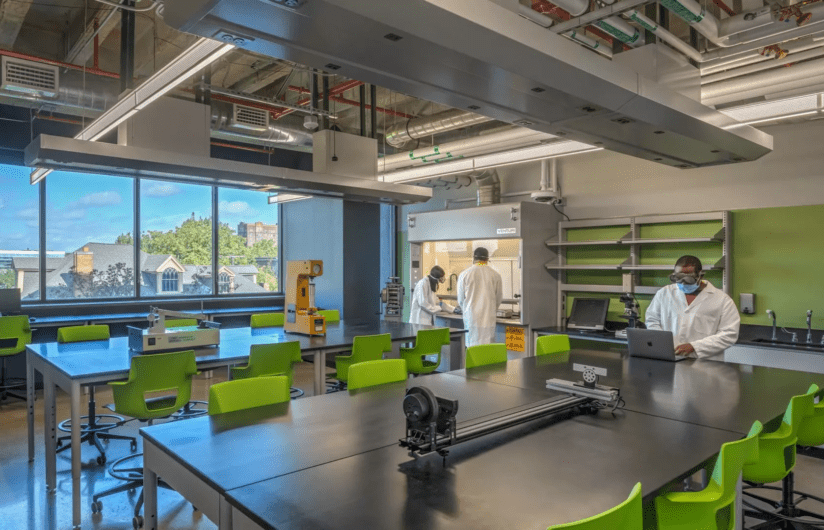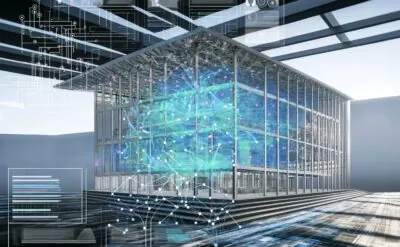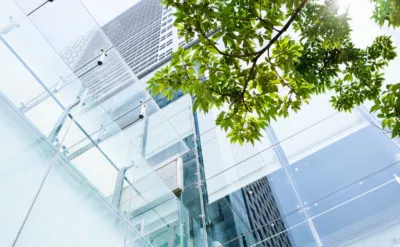| By Chaderique Menard, Julia Smith, Amanda Brookes
A leader in innovation must innovate.
That mantra was upheld through the transformation of an existing, underutilized building at Wayne State University from a library to the new STEM Innovation Center, an interdisciplinary teaching and learning hub. Working with Fishbeck and Catalyst Partners, the building recently achieved LEED Gold® Certification. This is a significant accomplishment considering the project was delivered in a condensed time frame – and during the height of the pandemic.
Originally targeting LEED Silver® status, our integrated team went above and beyond the project requirements to deliver a building that considers sustainable site development, water savings, energy efficiency, materials selection and indoor environmental quality by designing a common vision and holding each other accountable.
This adaptive reuse project gave new life to an existing building by extending its lifecycle in an effective sustainable approach. Reusing building materials saves on the project embodied energy and reduces energy consumption associated with demolition and extracting and fabricating new materials to replace the disposed materials. Our goal was to creatively reuse old materials effectively diverting them from landfills. The bottom line is that this adaptive reuse project is a solid strategy to help address the climate crisis.
Integrative Design Process
An integrative design process was critical to meet the stringent requirements of LEED Gold® in an adaptive reuse project. The design team was a microcosm of the space. A collaborative team of architects, engineers, designers and sustainability consultants complemented the interdisciplinary learning environments of what STEM represents. By holding workshops with stakeholders at Wayne State University, we defined specific targets and embraced a holistic view to reach a common goal.
Adaptive Reuse and Sustainable Construction
Adaptive reuse is the most sustainable project type. By reusing 91.66% of the existing materials from the 1970s science and engineering library, the design provided current and long-term efficiencies for this next-generation facility. Low-emitting paints, lighting, flooring and ceilings were used during construction and diverted 58.5% of construction and demolition waste from landfill.
Building Performance
Enhanced building commissioning plays a large role in the performance of the building and is critical for creating a quality environment for users and long-term energy usage control. All of the building’s mechanical, electrical and plumbing systems were tested with all issues resolved before turnover, upgrades to the building’s envelop were tested for thermal, air, and water infiltration, and monitoring-based procedures were provided to identify points to measure energy consuming systems. Additionally, the STEM Innovation Center achieved all 6 LEED® Enhanced Commissioning points – a rare accomplishment for an existing building.
The holistic design approach for the building systems and performance resulted in a 31% reduction in indoor potable water use, 30% increase in breathing zone air, installation of occupant lighting and thermal comfort controls and 16% in energy savings. Meters are located throughout the systems on gas lines fan variable frequency drives and chilled water lines for WSU to monitor energy usage at the source equipment.
Our commitment to proper documentation and ongoing performance analysis will help Wayne State University achieve its sustainability goals for years to come.
Download the WSU STEM LEED® GOLD CERTIFICATION METRICS here.



